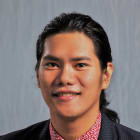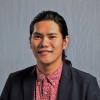commentary Commentary
Commentary: How to stay sane in a time of COVID-19 information overload
Increased media use in the time of COVID-19 might expose individuals to misinformation as well as information that might increase their anxiety, says Edson C Tandoc Jr.
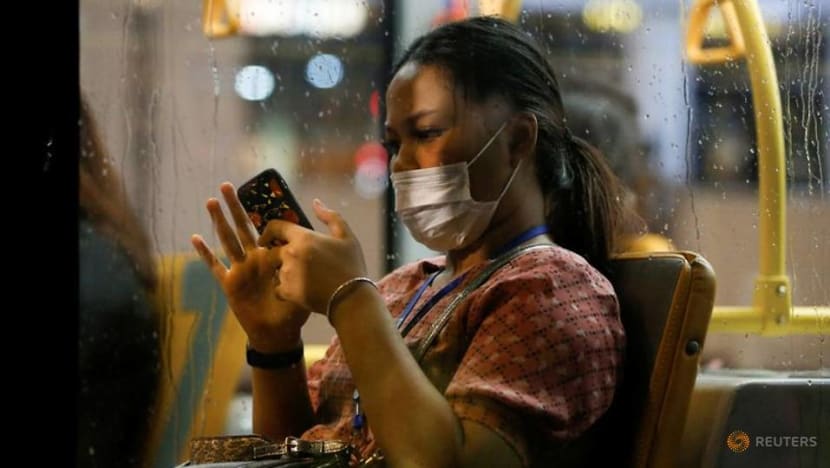
A woman wearing a protective mask uses a smartphone as she travels on a bus during rush hour, after Indonesia confirmed its first cases of COVID-19, in Jakarta, Indonesia, Mar 4, 2020. (Photo: Reuters/Willy Kurniawan)
SINGAPORE: The COVID-19 pandemic has put many cities around the world into lockdown, forcing millions of people to stay home until who knows when.
Media use has soared. Video streaming services, such as Netflix and Disney, have had to cut bandwidth to manage the upswing in demand as users, who now find themselves advised to avoid social gatherings, turn to online platforms to kill time.
News sites are also recording spikes in web visits while television viewing has seen huge growth in areas badly hit by the virus.
While part of this surge in media use stems from individuals fighting boredom while practicing social distancing and self-isolation, much of this also occur because individuals seek information to deal with the uncertainty arising from this pandemic.
Studies have documented how information-seeking helps reduce uncertainty during crises. Searching for advice, staying on top of updates and getting a better understanding of what’s happening around the world with the pandemic, also help equip people with important news that can guide how they respond to the crisis.
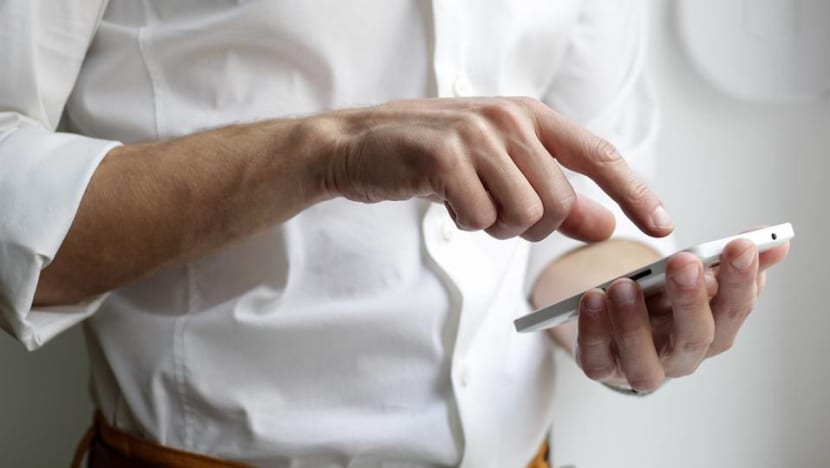
But such increased media use also exposes individuals to misinformation and information that might increase their anxiety.
MISINFORMATION AND ANXIETY
Government agencies, news outlets and social media platforms, already facing enormous challenges in arresting the spread of the virus, must devote huge resources to stop the spread of coronavirus-related misinformation.
These can range from something seemingly benign, such as how eating garlic can protect one from being infected, to something very dangerous. In Iran, viral messages claiming drinking industrial alcohol can protect one from the virus took the lives of more than 300 people.
READ: Commentary: Can chloroquine really treat COVID-19?
READ: Commentary: Can vitamin C really help with your cold or even COVID-19?
Seeking information can also expose individuals to details that might trigger anxiety and other negative emotions, at a time when the pandemic already tests the limits of people’s psychological well-being.
Seeing depressing images and learning about grim figures going up every day might increase anxiety in some people.
Indeed, studies have also documented how some individuals avoid news to manage uncertainty. Doing so protects them from being exposed to news that might trigger negative emotions.
Avoiding news about this pandemic, however, seems impossible. We are constantly bombarded with information about the pandemic whether we want it or not, through social media posts or family group chats on WhatsApp.
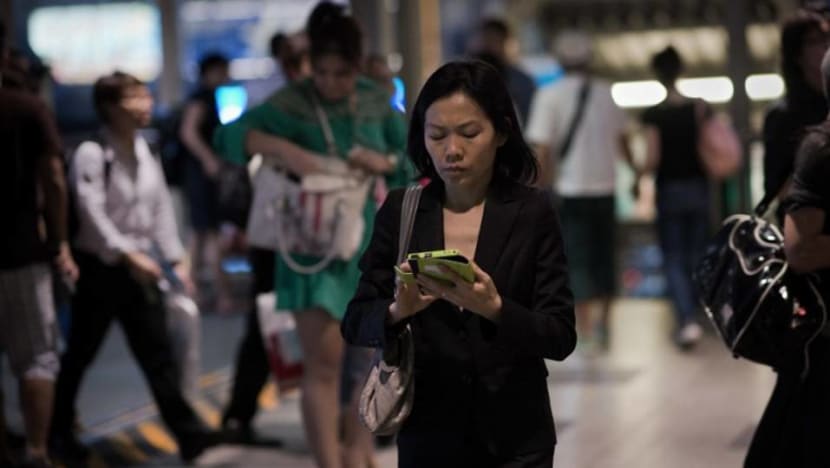
In a series of focus group discussions a few researchers and I conducted involving more than 80 university students in February, one student said: “I think regardless of whether you seek the news out, you will hear people talking about it around you.”
A GOOD MIDDLE GROUND
There are ways to keep track of the news without being sucked into the rabbit hole of nerve-racking COVID-19 headlines. Many of the students we interviewed waited for updates to be sent to them from news agencies as well as from the Government’s alert service on WhatsApp, rather than directly seeking out such news themselves.
If they have news apps installed on their phones, they open the app only when they get notifications. This helps them regulate their exposure to news about the outbreak.
Others engage in what scholars have termed as information-scanning, or when individuals obtain news about a specific threat despite not purposely seeking for it. For example, some people get to learn about the latest COVID-19 updates while browsing their Facebook feed to keep track of their friends.
READ: Commentary: Tech is not all bad. Our COVID-19 experience shows this
READ: Commentary: Disruptive tech is coming for COVID-19 threat, but needs more funding
Information-scanning might be a good middle ground for individuals who might otherwise feel more apprehensive if they are more regularly exposed to COVID-19 news, but who also need to be informed about latest developments, such as new Government measures.
DRAWING COMPARISONS ON SOCIAL MEDIA
Users share not only news updates but also how they kill time and respond to the crisis, including videos of their workouts, photos of dishes they have rustled up, and sharing tips on working from home.
These posts, sometimes light-hearted and amusing, are relatable, or serve as inspiration for those also stuck at home.
But these may be deemed insensitive by others, and have triggered counter-narratives on social media.
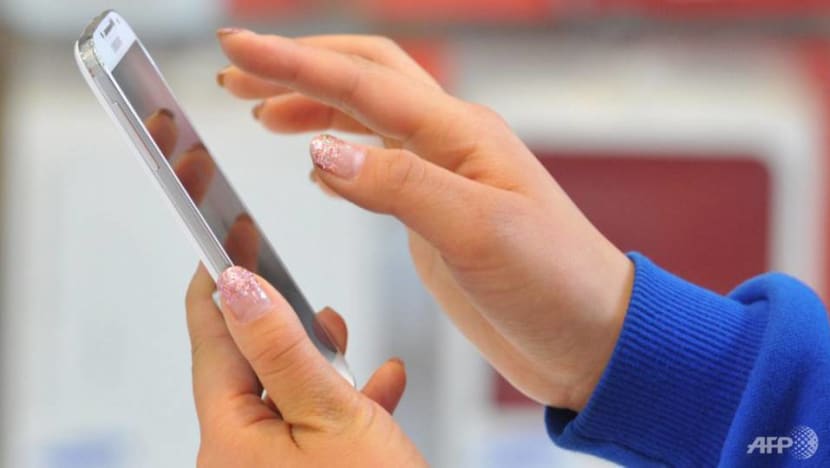
Photos and videos of people cooking, or stocking groceries have been contrasted with the plight of families unable to go to work and therefore unable to afford groceries and other essential supplies.
Not all individuals can afford to pay for Netflix. Frontline health workers don’t have the luxury to chill, netizens have pointed out.
Not everyone can be productive staying at home; parents have to work while tending to their children.
It is easy to say we should not compare ourselves to others, especially on social media, but holding back such comparisons is a challenging task.
READ: Commentary: What to do with all these health rumours and forwarded messages in the time of COVID-19?
READ: Commentary: We know more about the novel coronavirus but uncertainty remains about how virus spreads
How we understand our individual identity is based on social comparison, studies show. Individuals need benchmarks to assess themselves, and social media posts have become accessible yardsticks for social comparison, but this can also strain our psychological well-being.
MINDFUL MEDIA USAGE
So how can we stay connected and sane amidst a COVID-19 information overload?
First, we need to accept that individuals take many different approaches to cope with uncertainty. While some want more details, others try to shun negative details. We cannot simply impose on others what works for us.
We have to learn to accept that others may respond to negative news in a different way, even though it seems logical to think that staying informed about the latest news is the best way to respond to this crisis.
Much also depends on the kinds of news we share. For example, some individuals respond better to articles that increase their self-efficacy and inform what steps they can take to protect themselves, so they prefer reading about these instead of monitoring death counts.
Second, we must be active agents who ensure only accurate information goes around. Misinformation can trigger unnecessary panic, propagate dangerous practices, or give some people a false sense of security that might lead to complacency.
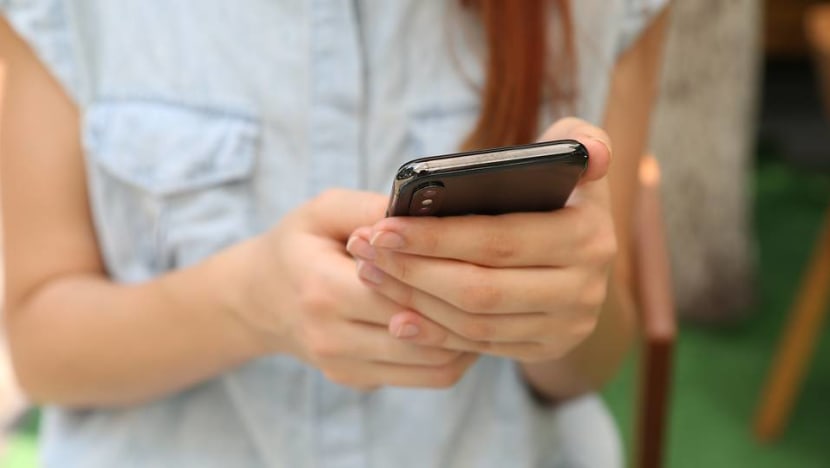
This is not easy, since even scientists still do not know everything about the virus. But we should rely exclusively on reliable and credible sources stepping up to provide timely and accurate facts.
So scrutinising the source of our news must be a habit. We should not trust a forwarded message on WhatsApp whose source cannot be traced.
That said, there are also traditionally credible sources – such as government officials and community leaders in other countries – who people look to for reassurance, but sadly also help propagate misinformation.
For instance, a spokesperson for the Philippine government wrongly claimed that eating bananas can protect people from the virus. A church in Gyeonggi Province in South Korea sprayed salt water into the mouths of churchgoers, believing it would kill the virus but instead infected dozens of its followers.
We should also not ignore misinformation when we see it, else we become complicit in its spread.
Third, we need to be mindful of our social media use. We should be mindful of what we post, and how we react to those we see.
READ: Commentary: 'BBC Dad' has learnt a thing or two about working from home
LISTEN: COVID-19 and safe distancing – why this can save lives
We should recognise that others cope by sharing about their lives on social media, while others cope by keeping quiet.
We need to be mindful that social media posts are selective – they cannot show a complete picture of someone’s life. This mindfulness should come handy when we’re tempted to compare our daily life with those of others, especially during this pandemic.
Some people will become more productive as they are forced to work from home; others will not be able to get work done due to abrupt shifts in their routines and will have to prioritise their personal circumstances. One is not necessarily a better response than the other.
This virus shows us we cannot just think about ourselves: The precautions we take are for the sake of others as well.
This should also be true about how we stay informed as a community facing uncertainty.
BOOKMARK THIS: Our comprehensive coverage of the coronavirus outbreak and its developments
Download our app or subscribe to our Telegram channel for the latest updates on the coronavirus outbreak: https://cna.asia/telegram
Edson C Tandoc Jr. is an Associate Professor at the Wee Kim Wee School of Communication and Information at Nanyang Technological University in Singapore, where he teaches and does research on news production and consumption.








